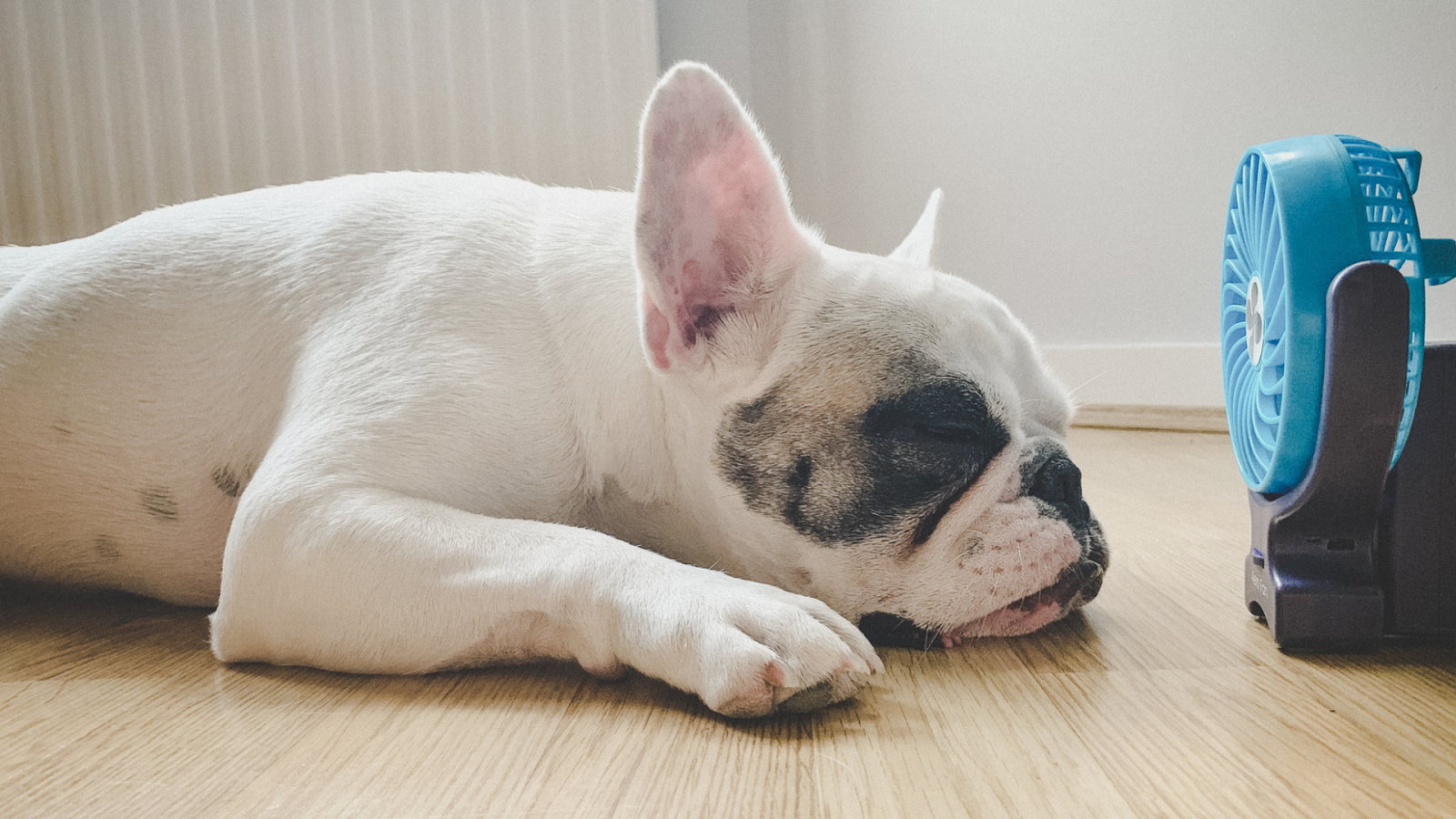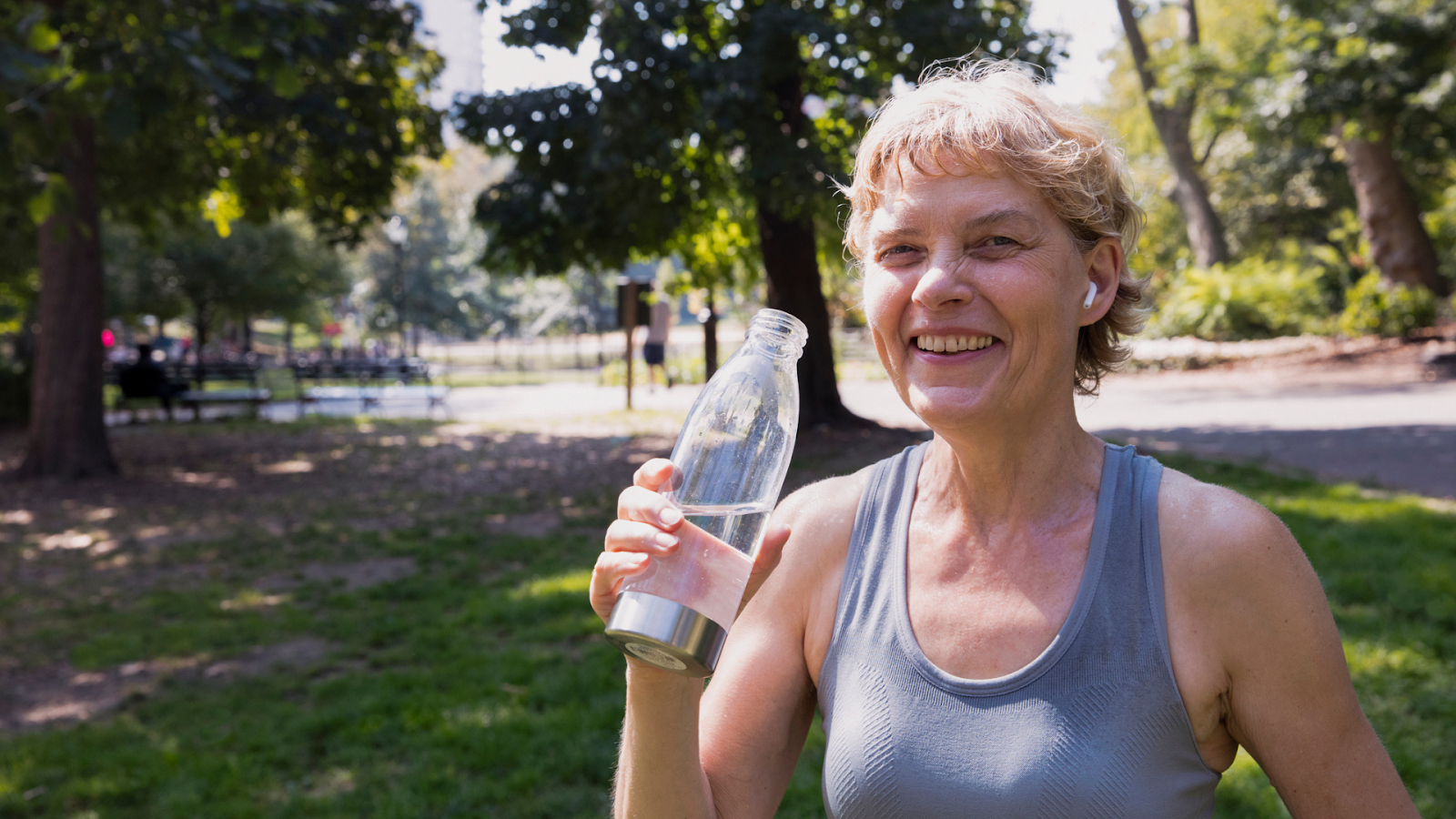Health
The science of keeping cool: what actually works (and what doesn’t)

When the mercury climbs, your comfort depends more on smart strategies than lucky guesswork. Here’s what the science really tells us about staying cool.
By Bron Maxabella
Summertime in parts of Australia can feel less like a holiday and more like a pressure cooker. We sweat, we groan, we flick on every fan in the house, we eat our body weight in Almond Magnums and we try the latest keep-cool hack by Instagram influencers… but nothing seems to help.
This isn’t something to take lightly. Summer temperatures demand respect – heatwaves are our deadliest natural hazard, causing more deaths than fires or floods. But lucky for all who are sweating in the Lucky Country, there are tricks grounded in thermodynamics, physiology and good old common sense that really can make a difference.
So let’s take a look at the science of keeping cool: what your body is doing, why humidity matters, how your house set-up can either help or hurt, and which low-cost methods actually work. (Yes, the science does get a bit nerdy, but the payoff is fewer sweaty nights, better rest and potentially lower electricity bills.)
How the body cools itself (and when things go wrong)
Our bodies are constantly balancing energy: we produce heat through metabolism then shed it to the environment. The main ways we lose heat are through radiation, where heat is emitted from the body as infrared rays (yes, really) and evaporation, primarily through sweat turning into gas and carrying heat away from the skin.
But that only works if the surrounding air is dry enough to let the moisture evaporate. When humidity is high, the air is already saturated with water vapor and evaporation slows dramatically. In other words, when it’s sticky, your sweat struggles to do its job. This is why the ‘dew point’ is such a critical measure for how comfortable you’ll feel on any given hot day.
If the heat overwhelms your body’s ability to cool itself, you risk heat exhaustion or heatstroke. According to HealthDirect and NSW Health, heat-related illnesses range from cramps and dizziness to organ failure if untreated. Symptoms like nausea, confusion, heavy sweating (or sometimes the absence of sweating), racing heart or faintness should never be ignored.
This is why keeping the environment cool matters almost as much as keeping your body cool.
How to bring the temperature around you down
Seal, shade and insulate your space
One of the top recommendations from CSIRO is to ensure your home is well sealed and insulated. A leaky roof, gaps under doors or single-glazed windows can let in tons of unwanted heat.
The trick is to stop heat from getting in, especially during the hotter parts of the day. External shades, awnings, trees or shade cloths over windows can block up to 90% of solar gain. Similarly, thermal curtains or blinds with a reflective backing help reduce the heat coming through glass.
If the heat’s already inside, wait until evening or early morning and open windows and doors to allow cross-ventilation. Just make sure you time it right: open when it’s cooler outside than in.
Fans are helpful (conditionally)
Fans don’t lower the air temperature, they move air. But that movement helps sweat evaporate, which does feel cooler. The Victorian government says to use electric fans when indoor temps are below about 39-40°C, but once the air is hotter than that fans can actually work against you, effectively circulating hot air.
That said, combining fans with evaporative cooling (like placing a bowl of ice or wet cloth in front of the fan) can improve the cooling effect. But again, the atmosphere must be dry enough to allow evaporation for this to work – in humid conditions it will be less effective.
Interestingly, a recent study from Griffith University found that ceiling fans alone didn’t sufficiently reduce physiological strain (core temp, heart rate) during extended exposure in vulnerable people, especially above about 31°C. This suggests you can’t rely on a fan as your only defense in extreme heat.
Consider “climate safe rooms” or cooling zones
Some Aussies are retrofitting parts of their homes into “climate safe rooms” – highly insulated, sealed spaces where cooling can be concentrated. The idea is to reduce heat transfer out and in to then allow air-conditioning to operate more efficiently. This is where your fan comes into its own, circulating the cool air and potentially meaning you can run your air conditioning on a slightly higher temperature to save money.
To keep cooling costs down further, check you’re getting the best deal from your energy provider here.
Also, councils and community groups are setting up communal cooling centres or “safe spaces” where people can escape heat. In Melbourne, for example, local projects are identifying public buildings to use during heatwaves.

What to do to cool your body
Hydrate early and often
You’ve heard it a million times: drink plenty of water. But how much is plenty? Queensland Health recommends 2-3 litres spread out throughout the day, even if you don’t feel thirsty. Generally high-sugar or high-caffeine drinks aren’t included in your daily tally, so consider swapping your espresso for a tall glass of sparkling water. A practical tip is to carry a reusable water bottle with you always and consider electrolyte solutions if you’re sweating heavily for extended periods.
Cool your skin directly
If your environment is warm, help your body by cooling the surface. Some techniques with real evidence include:
- Immersing hands, feet or forearms in cool water. The blood vessels there are close to the skin and this helps pull heat from the core.
- Taking a cool shower or bath – it’s quick, refreshing and effective
- Placing damp cloths or ice packs near pulse points (especially your neck and wrists) can help. The Better Health Channel suggests wrapping ice in a damp towel and applying to the neck.
- Misting or spray bottles are another option. Light misting uses evaporation to cool skin, which is especially useful in drier climates. But again, less effective in sticky humidity
Wear the right clothes
Forget heavy synthetics, your best bet is lightweight, loose-fitting, breathable fabrics like cotton or linen. These allow sweat to evaporate more readily. Choose light colors (which reflects more sunlight) and wear a wide-brimmed hat and sun-protective clothing for outdoor time.
What doesn’t really help
The internet is full of tips and tricks that promise to help you keep your cool. Some of them work brilliantly, others not so much, and a few are pure fiction.
Cold drinks = instant fix?
Drinking icy water gives a quick internal chill, but your body will adjust and generate more heat later to balance this. It’s a comfort tool, not a long-term cooling strategy. Unfortunately this also applies to eating ice cream…
Over-reliance on fans
As noted, fans become less helpful once ambient air exceeds the body’s temperature threshold. Moving hot air around isn’t helpful if it’s hotter than you are.
Opening windows during daytime heat
If it’s hotter outside than inside – especially during the middle of the day – opening windows just invites the heat in. Seal up the windows, close the blinds and wait until it's cooler outside to open things up again.
Air-conditioning cranked way down
Yes, air-conditioning is highly effective, but setting it to icy levels dramatically increases energy use and cost (not to mention your carbon footprint). It also creates a big temperature shock when you step outside, which can stress your system.
Experts often suggest keeping AC temps around 24-26°C for both comfort and efficiency. Also, air-con without good sealing or insulation is an expensive waste because if cool air leaks out, it’s fighting an uphill battle.
Save money by getting the best deal from your energy provider, compare plans here.
Putting your cool new routine together
Here’s what a daily “cool routine” might look like, based on the science.
Morning (while it’s still relatively cool): Open windows for cross-ventilation, seal gaps, close blinds/curtains, run your air-con plus fan if needed. Drink a glass of water before you even feel thirsty then keep having regular water breaks.
Midday / peak heat hours: Stay indoors in the coolest room and continue hydrating. Avoid heavy cooking or appliances that generate heat. Wear light clothing and use cooling sprays or take cool showers if needed. Use fans only if indoor temperature is below 39°C. If temperatures get extreme, consider visiting a local cooling centre if your council has provided one. If none is available, head to your nearest air-conditioned shopping centre.
Late afternoon / early evening: If outside temps drop, open windows and doors for ventilation.
Night / while sleeping: Use ceiling or other fans (if temperature allows) and breathable, natural fibre sheets like cotton or linen. If you must sleep with the air conditioning on, ensure you set it to around 24-26°C for overnight comfort.
This will also help: Make your sleep habits as clean as your sheets
When to be extra careful
Some people are much more vulnerable to the effects of heat: older adults, babies and children, people with chronic illnesses (like heart or lung disease), pregnant women and those who are socially isolated. During heatwaves, these people require special attention, so reach out and check on your mates and community.
Citro may receive a small commission at no cost to you on any orders placed using the Compare the Market links in this article.
Feature image: iStock/gollykim
Tell us in the comments below: What's your favourite way to keep cool?

More ways to keep your cool:
